Pu’uhonua O Honaunau National Historical Park
The native Hawaiians had a strict code of laws. Ordinary Hawaiians were not allowed to enter areas reserved for a chief, touch his possessions, walk in his footsteps, cast their shadow on him or eat forbidden foods. Anyone who did so was considered to have broken Kapu (the sacred laws) which would incur the wrath of the gods for which the penalty was death. Justice would be swift unless the offender could evade his pursuers and reach a pu’uhonua (place of refuge). Up to the early 19th century, Pu’uhonua O Honaunau was such a place of refuge. Hawaiians who had broken Kapu could get absolution from a priest here after which they could safely return home. It was also a place of refuge from battle for defeated warriors and bystanders caught up on warfare. In 1955 the site was opened as the City of Refuge National Historical Park which was changed to Pu’uhonua O Honaunau National Historical Park in 1978. There are three parts to the National Historical Site, the pu’uhonua (refuge), the Royal Grounds adjacent to it where several generations of chiefs lived and at the end of a trail through rough lava the site of Ki'ilae Village.
Konane Stone
Konane is a strategy game for two players invented by the native Hawaiians. The game has is similar to draughts or checkers. In ancient times it was played on a flat lava rock that had small depressions called poho carved into it with stones of contrasting colour used as the pieces. The Konane stone in this picture is original, but the pieces are not.
Ki'i (wooden images), Hale o Keawe Temple & Mausoleum
Drawings from the 1820s show that there were wooden images called Ki’is placed around the temple of Hale o Keawe. These were intended to warn Hawaiian villagers against defying the Kapu(sacred laws). The reconstructed Hale o Keawe includes these magnificent Ki’is.
Hale o Keawe Temple & Mausoleum
Hale o Keawe was built around 1650 by Kona chief Keawe-i-kekahi-ali'i-o-ka-moku or his son Kanuha as a Royal Mausoleum. It was used a resting place for Kona nobility from Keawe-i-kekahi-ali'i-o-ka-moku though to a son of Kamehameha I in 1818. Western accounts and drawings from the 1820’s indicate that the structure was then still largely intact but in 1829 Queen Ka'ahumanu ordered the removal of the bones from the site and the destruction of the temple. The temple platform was extensively damaged by tsunamis in the 1860s and 1870s. In the 1960s the platform was excavated and restored, and a replica of the temple and mausoleum was built on top. Pu’uhonua O Honaunau National Historical Park has replaced the replica twice since it’s first restoration.
Halau
This is a reconstruction of a typical ancient Hawaiian building, in this case serving as a canoe house (halau wa’a).
DLU160621
Click on Minimap to navigate
Home > US States > The West > Hawaii > Big Island >
The Great Wall
The boundary of the sacred area of the pu’uhonua (refuge) was marked by a lava stone wall. This dry stone wall was up to 3.6 metres (12 feet) high, 5.5 metres (18 feet) thick and had a length of 290 metres (950 feet).


To move forwards or backwards through the Big Island Trail click the arrows above, or select your next destination on the Minimap.
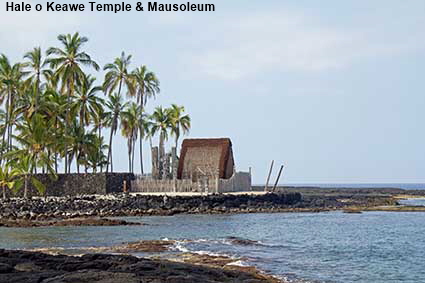
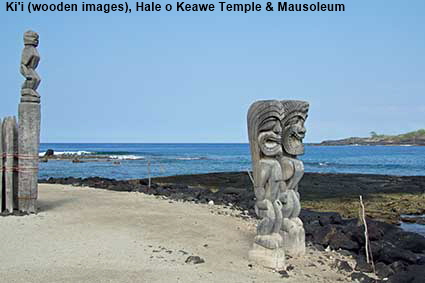
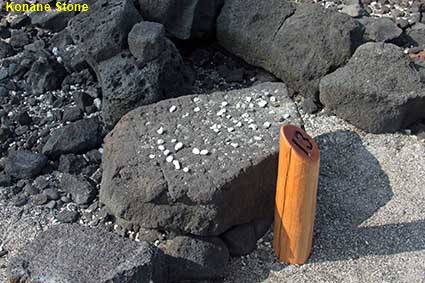
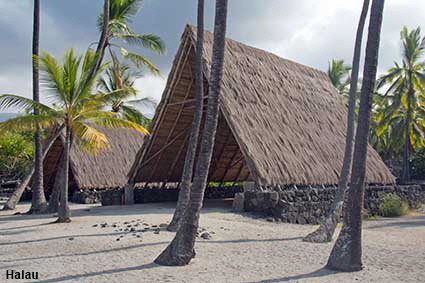
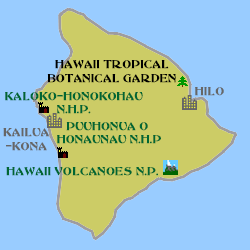

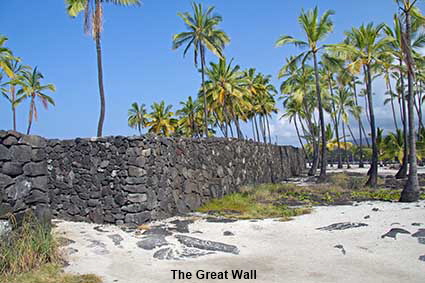
© Mike Elsden 1981 - 2025
The contents of this page may not be reproduced in full or in part without permission